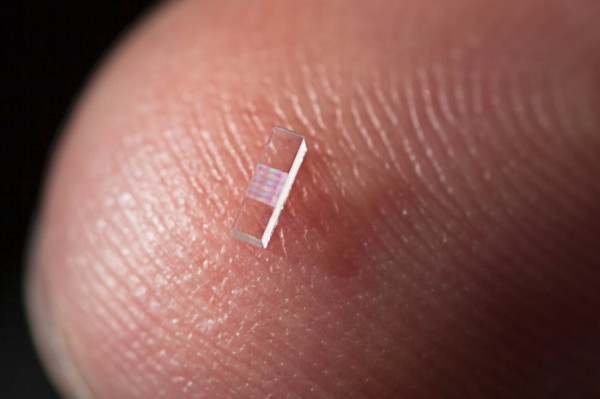Accelerator On A Chip: Tiny Particle Collider Could Lead To Portable X-Ray Technology And Cheaper Accelerators

A research team encompassing scientists at the U.S. Department of Energy’s SLAC National Accelerator Laboratory and Stanford University has made an advance that could dramatically cut the cost and size of particle accelerators for medicine and science. The accomplishment was reported online in the journal Nature Friday.
The research team used a laser to accelerate electrons at a rate 10 times higher than conventional technology in a nanostructured glass chip smaller than a grain of rice, Stanford reported.
“We still have a number of challenges before this technology becomes practical for real-world use, but eventually it would substantially reduce the size and cost of future high-energy particle colliders for exploring the world of fundamental particles and forces,” said Joel England, the SLAC physicist who led the experiment, “It could also help enable compact accelerators and X-ray devices for security scanning, medical therapy and imaging, and research in biology and materials science.”
Current-generation accelerators rely on microwaves to increase the energy of electrons, Stanford noted, then pointed out, “Researchers have been looking for more economical alternatives, and this new technique, which uses ultrafast lasers to drive the accelerator, is a leading candidate.”
According to Stanford: “Particles are generally accelerated in two stages. First they are boosted to nearly the speed of light. Then any additional acceleration increases their energy, but not their speed; this is the challenging part.”
Elaborating on the advance made in this area, Stanford said: “In the accelerator-on-a-chip experiments, electrons are first accelerated to near light-speed in a conventional accelerator. Then they are focused into a tiny, half-micron-high channel within a glass chip just half a millimeter long. The channel had earlier been patterned with precisely spaced nanoscale ridges. Infrared laser light shining on the pattern generates electrical fields that interact with the electrons in the channel to boost their energy.”
This initial demonstration achieved an acceleration gradient -- or amount of energy gained per length of the accelerator -- of 300 million electronvolts per meter. That’s roughly 10 times the acceleration provided by the current SLAC linear accelerator.
“Our ultimate goal for this structure is one billion electronvolts per meter, and we’re already one-third of the way in our first experiment,” said Robert Byer, the Stanford applied-physics professor who is the principal investigator for this research.
© Copyright IBTimes 2024. All rights reserved.






















